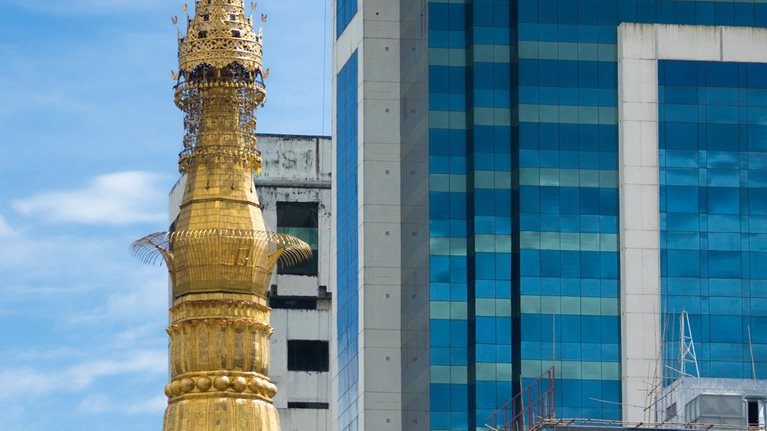President Thein Sein of Myanmar is making his first visit to Britain this week. He will be holding talks in London at a critical moment in Myanmar’s emergence from isolation.
Politics and ethnic tensions continue to cast a shadow over the broad sense of optimism about the business opportunity. But developing its economy is probably the major challenge facing Myanmar.
A country of 50m people, Myanmar today represents only 0.2 per cent of Asia’s GDP, or roughly the GDP of the city of Bristol – the result of years of economic isolation and political turbulence. Without growth and a rapid economic transformation that provides palpable benefits to Myanmar’s citizens, the momentum towards democracy and peace could all too easily falter. Myanmar’s international supporters must broaden the dialogue beyond political reform and the peace process to how they can also support this economic transformation.
As a starting point we need to build on Myanmar’s “Mandela moment” – the euphoria surrounding the freeing of political prisoners – to address the shockingly weak position of Myanmar’s economy. For much of the 20th century, Myanmar’s GDP per head was stagnant while it quadrupled on average across the rest of the world. Almost every item on the normal economic development agenda needs attention, from infrastructure to education – citizens have on average just four years of schooling, half that of China – to the poor productivity of almost every sector of the economy.
A worker in Myanmar adds only $1,500 of economic value in a year of work, around 30 per cent of the average of his or her Asian peers. At expected demographic trends and the historic rate of labour productivity growth, Myanmar’s GDP would grow at less than 4 per cent a year. But Myanmar could grow at twice that speed if it almost tripled annual productivity growth from an estimated 2.7 per cent to around 7 per cent.
This is a big ask – but other Asian economies have achieved this step change in productivity growth. China achieved a 7 per cent rate between 1994 and 2006, and Thailand a 6.5 per cent rate from 1982 to 1995. Indeed, the fact that Myanmar’s productivity starting point is so low suggests that, with the right policies and concerted investment from business, it could conceivably stage an even more impressive productivity revolution.
To make this ambition a reality, Myanmar needs to focus on four major areas. First, it needs to support a shift out of agriculture and into manufacturing and services. It is startling that Myanmar has become more, not less, dependent on agriculture. Agriculture’s share of GDP rose from 35 per cent in 1965 to 44 per cent in 2010, a period during which the share fell sharply across Asia to an average of only 12 per cent. Second, Myanmar needs to deliver economic growth in manufacturing, agriculture, tourism, and infrastructure – not just in energy and mining, which are capital-intensive and do not create mass employment. Third, Myanmar needs to plan for, and invest in, urbanisation. Today, around 13 per cent of the population lives in Myanmar’s large cities but that could rise to 30 per cent by 2030 – an addition of 10m people. Finally, Myanmar needs to attract around $170bn of foreign investment between now and 2030 – and the know-how that often comes with it.
The odds of Myanmar achieving this daunting economic agenda, hand in hand with political reforms and the peace process, are hard to call. Taking full advantage of modern technology will be key to success. This is a rare example of an economy starting its developmental journey almost from scratch in the age of the mobile internet. A nascent banking sector can quickly develop via mobile phones; retail, too, can move direct to the web and mobile. Even health care and education services can be delivered via mobile to an extent, as we are seeing in many African countries. If Myanmar were to invest quickly and heavily in broadband and mobile telecoms, it could be one of the fastest-growing economies in the world, potentially quadrupling GDP from $45bn in 2010 to over $200bn in 2030, and taking 18m people out of poverty.
How best can the international community support Myanmar? A twin-track approach seems sensible. For example, Britain is already providing more than £180m of aid between 2011 and 2015. But other support is needed on the economic front, beyond the usual promotion of trade and investment. Human capital and expertise gaps need to be closed as rapidly as possible. Seconding experts and helping to build capabilities in areas such as town planning, vocational training, online government,telecoms, mobile financial services regulation, and achieving government delivery would materially improve the odds of success.Indeed, with the right support, Myanmar could even exceed the expectations of a watching world.
This article originally ran in Financial Times.


